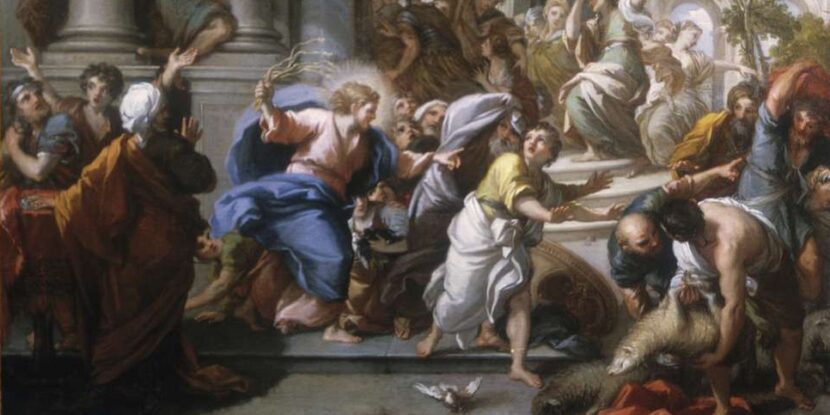Today is Holy Monday, formally the second day of Holy Week following Palm Sunday—which marks Jesus’s Triumphal Entry into Jerusalem astride a humble donkey, fulfilling Zechariah’s ancient prophecy of the Messiah.
Certain events in Jesus’s life, particularly those leading up to his Crucifixion and Resurrection, are commemorated on each day of Holy Week. Holy Monday is a time to reflect on Christ not as the Lamb but as the Judge—for as St. Paul warns in his Second Epistle to the Corinthians, “we must all appear before the judgment seat of Christ, so that each one may receive what is due for what he has done in the body, whether good or evil.”
CURSING A TREE AND CLEANSING A TEMPLE.
Returning to Jerusalem after a quiet night in Bethany following Palm Sunday, Jesus paused at a fig tree to eat. It was in leaf but without fruit, and Jesus cursed it, saying, “Let no fruit grow on thee henceforward forever.”
This was not truly intended as punishment for the tree—as St. Mark’s Gospel notes, “it was not the season for figs”—but as a lesson for his disciples, which we will revisit on Holy Tuesday tomorrow.
Entering Jerusalem, Jesus proceeded to the Temple, where He employed no such cryptic methods to make His will clear. Eyes flashing at the sight of merchants hawking animals and moneychangers counting coins in the holy place, He wove “a whip of cords” and “drove them all out of the temple, with the sheep and the oxen, and poured out the changers’ money and overturned the tables” in a whirlwind of fury.
“Take these things away!” He thundered, His voice echoing through the chaos. “Do not make My Father’s house a house of merchandise!”
The temple authorities were rebuked directly: “Is it not written, ‘My house shall be called a house of prayer for all nations’?” He demanded, “But you have made it a den of thieves.”
ANOTHER TEMPLE.
St. Mark’s account reveals this was the moment the Jerusalem elite made up their minds to have Jesus killed: “And the scribes and chief priests heard it and sought how they might destroy Him; for they feared Him, because all the people were astonished at His teaching.”
St. John’s Gospel describes how they challenged Jesus, demanding a sign to prove He had the authority to chastise them thus. He challenged them in turn, proclaiming, “Destroy this temple, and in three days, I will raise it up.”
“It has taken 46 years to build this temple,” they sneered. “And will You raise it up in three days?”
But the temple Jesus spoke of was not made of stone and mortar. On Easter Sunday, the meaning of his words would become clear to the priests—and will be made clear to readers of this Holy Week series.


